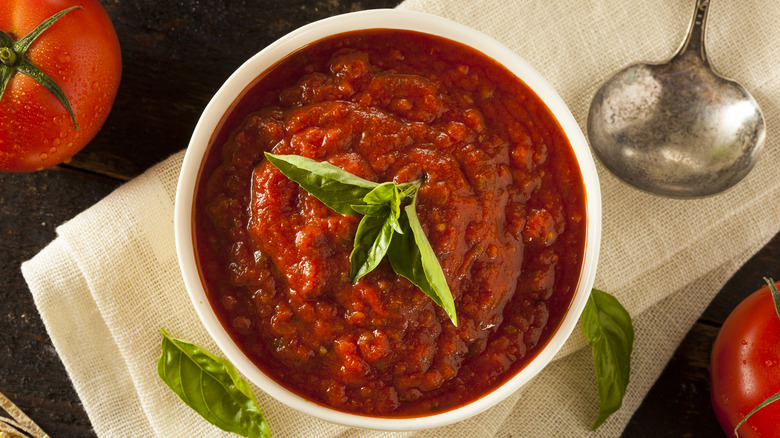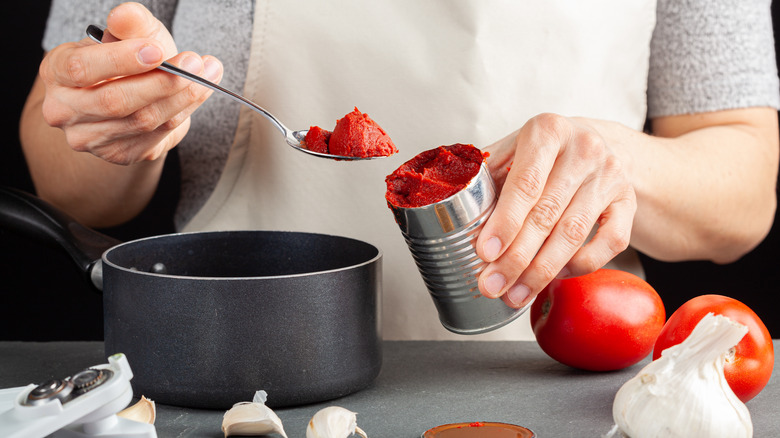You Should Be Browning Tomato Paste. Here's Why
There are a lot of nifty shortcuts and tools you can use in the kitchen to achieve your ideal flavors. In dishes like beef Irish stew or jambalaya, tomato paste adds a caramelized sweetness and robust tomato flavor to the dish. Tomato paste is a tomato sauce that has simply been reduced until it has become thick.
On a nutritional level, SF Gate says that tomato paste is relatively healthy (almost the same as fresh tomatoes) with a hearty amount of antioxidants, iron, potassium, and B vitamins. In fact, a tablespoon of it can give you up to 6% of your recommended daily value of iron, B vitamins, and potassium. That's all well and good, but what about everything else? Fundamentally, tomato paste is meant to be used to bring heartiness and savory elements to your dishes. This is why it is often found in stew and chili recipes as well as pizza sauces. However, you shouldn't just throw uncooked tomato paste into your recipes — here's why.
How to properly use tomato paste
Some people don't know how to properly use tomato paste. You'll see inexperienced cooks simply throw tomato paste straight out of the can and into a dish without browning it first, and that just will not cut it. Tomato paste is excellent for intensifying dark, savory flavors when cooked, but it should not be added in its raw form.
As Brit+Co notes, tomato paste straight out of the can or tube is tart. It can have almost a metallic taste to it, which does not taste good with any food. You might think that the boiling broth you plopped it into will effectively remove that flavor, but you won't get the intended richness your dish needs to be absolutely delicious. Before you mix it in with the rest of your food, Milk Street suggests browning the paste in oil in a pan until the bright, red concentrate turns dark (but not burnt) to achieve your intended flavor. By caramelizing the tomato, you will deepen the flavor and get rid of the raw, bitter taste.

